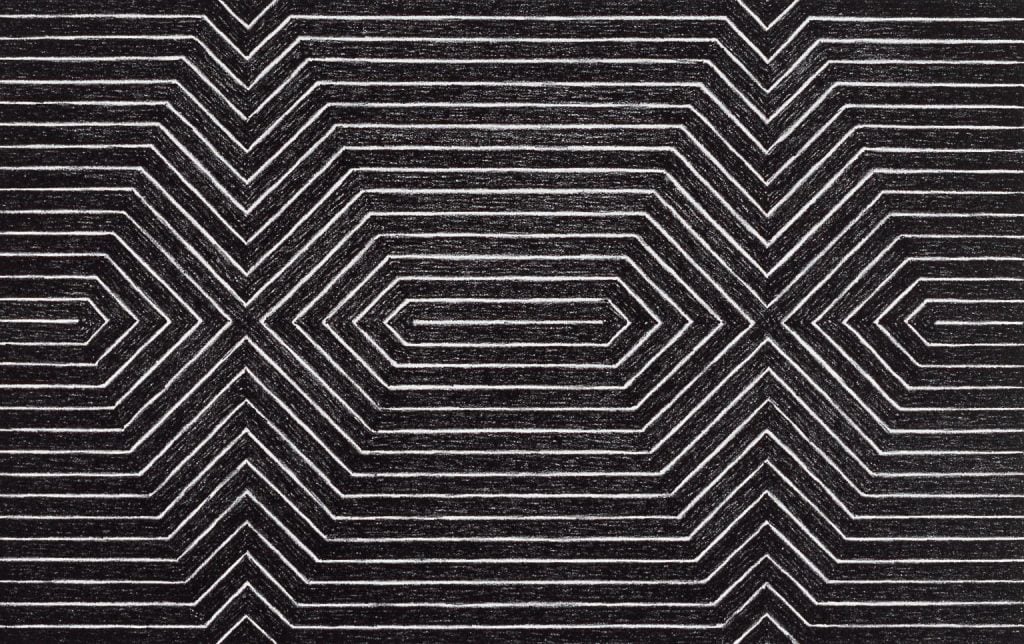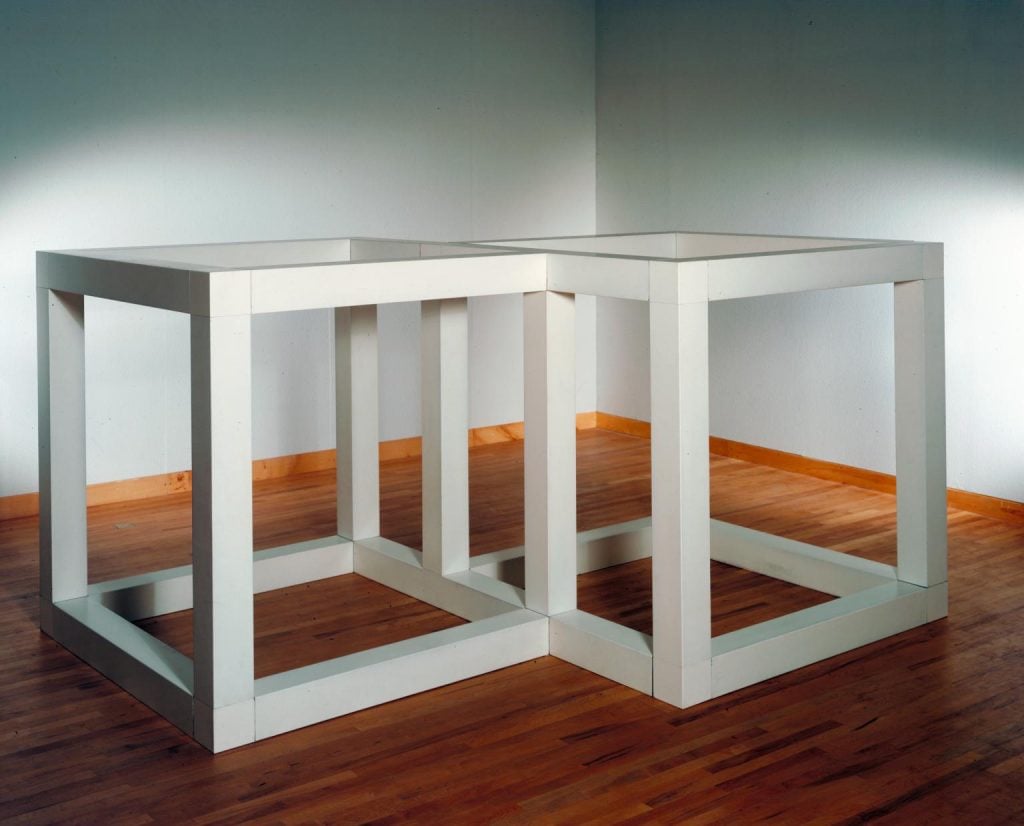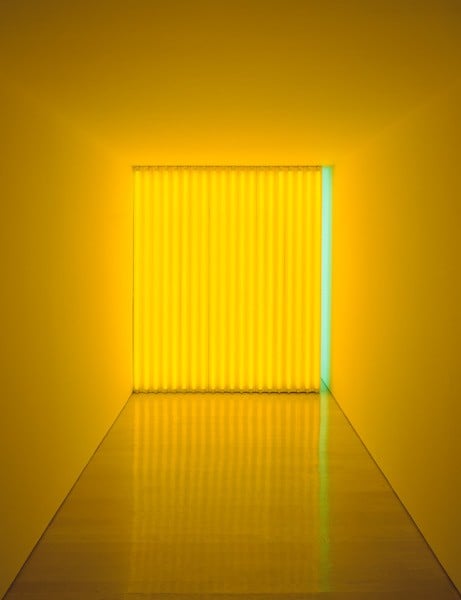Art Movement: Minimalism

By Shira Wolfe
In 1958, the young Frank Stella, who had just graduated from Princeton University, moved to New York City. There, he became immersed in the Abstract Expressionist scene while working as a house painter to pay the rent. However, it was the work of Jasper Johns that inspired his Black Paintings (1958-1960), which he created using plain, commercial paint and brushes similar to the materials he used for his day job. These works made him famous at the age of 23, and were instrumental in paving the way for Minimalism. Stella’s statement ‘What you see is what you see’ became the Minimalism art movement’s mantra.
What is Minimalism and minimalist art?
The Minimalism art movement is one of the most influential of the 1960s, emerging in New York City among a number of young artists who were moving away from Abstract Expressionism and favoured a sleek, geometric aesthetic instead, which would manifest itself in minimalist art. Earlier European abstract movements greatly influenced American minimalist art creators. In that period, works by the Dutch De Stijl artists, Russian Constructivists, and members of the German Bauhaus were being shown in New York. Each of these groups had pioneered radical abstraction, and inspired artists like Donald Judd, Dan Flavin and Robert Morris to explore new directions in their art.
These artists wanted to create art that referred only to itself, allowing the viewer an immediate, purely visual response. The personal, gestural elements were stripped away with the aim to reveal the objective, visual elements of art.
Key dates: 1960s and 1970s
Key regions: United States
Key words: abstract sculpture and painting, geometric shapes, light installations, New York, West Coast
Key artists: Donald Judd, Dan Flavin, Carl Andre, Sol Lewitt, Frank Stella, Agnes Martin, Robert Morris, Mary Corse, John McCracken, Larry Bell, Robert Irwin.
Minimalism art arrives on the scene
Several artists published articles during that period, which helped to shape and define the minimalist art movement. Donald Judd’s 1965 article ‘Specific Objects’ attempted to establish the aesthetics of Minimalism. Judd rejected traditional distinctions between art forms in order to embrace works that were not so easily labelled as painting or sculpture. Robert Morris’s ‘Notes on Sculptures’ from 1966 called for the use of simple forms that the viewer could grasp intuitively and argued that the interpretation of the artworks depended on the context and conditions in which it was shown. In 1967, Sol LeWitt published ‘Paragraphs on Conceptual Art,’ which elevated the importance of the idea and the process of the conception and realisation of the works of minimalist art over the aesthetic features.
One of the main events that established Minimalism art was the 1966 ‘Primary Structures’ exhibition at the Jewish Museum in New York. It was the first American museum to present this style of art, and the exhibition received great critical acclaim for introducing a new visual lexicon to the Western art canon. The show included works by Dan Flavin, Sol LeWitt, Robert Morris, Carl Andre and Donald Judd, who presented geometric and formally reductive artworks.

Minimalist sculpture
Sculpture was an extremely important part of Minimalism and Minimalism art. Artists were interested in creating three-dimensional geometric forms in space using industrial materials such as fibreglass, plywood, plastic, sheet metal and aluminium. Sculptures were placed on the floor as opposed to on a pedestal, and visitors were invited to examine the relationship between different parts of the artwork within a repetition of geometric bodies. Artists like Donald Judd, Dan Flavin, Sol LeWitt, Robert Morris, Carl Andre, Anthony Caro and Tony Smith experimented with the relationship between physicality and space through their grid-based, sculptural compositions. Sculptures that embodied this new Minimalism at the ‘Primary Structures’ exhibition in 1966 include Carl Andre’s Lever (1966), which consisted of 137 bricks laid in a line along the floor, and Sol LeWitt’s Untitled (1966), an open white cube divided into many interior cubes.

Minimalist painting
In painting, artists like Frank Stella, Ellsworth Kelly, Agnes Martin and Robert Ryman created entirely self-referential canvases with ‘hard edges,’ abrupt transitions between areas of solid colours, repetitive patterns and geometric forms. The result was a flat, two-dimensional space that directly affected viewers, who got to experience art stripped down to its basic physical appearance and fundamental character. This is evident in Frank Stella’s paintings, for example in The Marriage of Reason and Squalor II (1959) or title not known (1967). Both paintings contain either a single vertical or horizontal unpainted line at the centre of the canvas, offset against the other white and black lines that divide the canvas into perfectly equal sections. With this highly regulated pattern, Stella attempted to force illusionistic space out of the painting.
Minimalist light installations
An important aspect of the Minimalism art tendency was the preoccupation with light installations. Artists started using fluorescent light tubes to sculpt space into colour zones. The focus of the work was on the light itself, not on the forms of the light tubes. In New York, Dan Flavin worked predominantly with fluorescent light installations – first, he made ‘icons’ by combining electric lights with plain square-fronted constructions, and later, he started working with fluorescent tubes of any commercially available colour. Meanwhile, on the West Coast, minimalist art was developing at a rapid pace in the 1960s and 1970s in the form of the Light and Space Movement.

The artists in the movement were concerned with the way the use of light and geometric shapes could affect the surrounding environment and the perception of the viewer. Artists associated with this branch of Minimalism are Mary Corse, John McCracken, Larry Bell and Robert Irwin. Learn about the rediscovery of Mary Corse’s light art, after a long career of working under the radar and in the shadow of her male contemporaries here in Artland’s Lost (and Found) Series.
Minimalism FAQ
What is Minimalism art?
Created in the United States in the 1960’s, Minimalism art is an extreme type of abstract art that usually is depicted through simplistic shapes and hard edges, all while exposing the essence of the forms and materials used. The movement challenged preconceived notions of what art is and could be. The Minimalism art movement debunked the myth that it was only to be enjoyed by elite classes.
Who are iconic artists of the Minimalism art movement?
The most iconic minimalist artists are Donald Judd, Larry Bell, Ellsworth Kelly, Frank Stella, Sol LeWitt, Dan Flavin and Agnes Martin.
When did the minimalism art movement begin?
The Minimalism art movement began in the late 1950’s and truly thrived in the 1960’s – 1970’s and was conceived in the United States.


